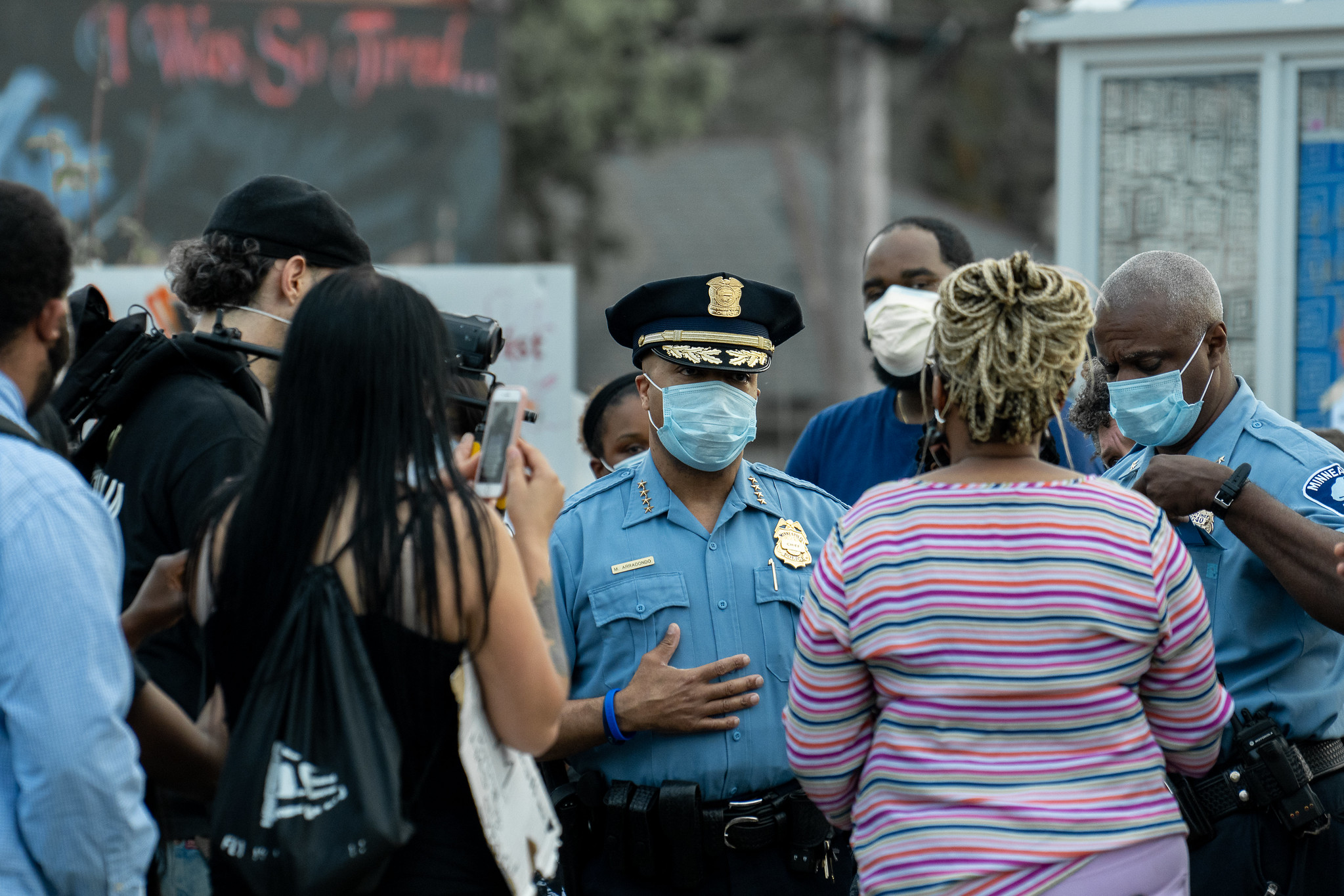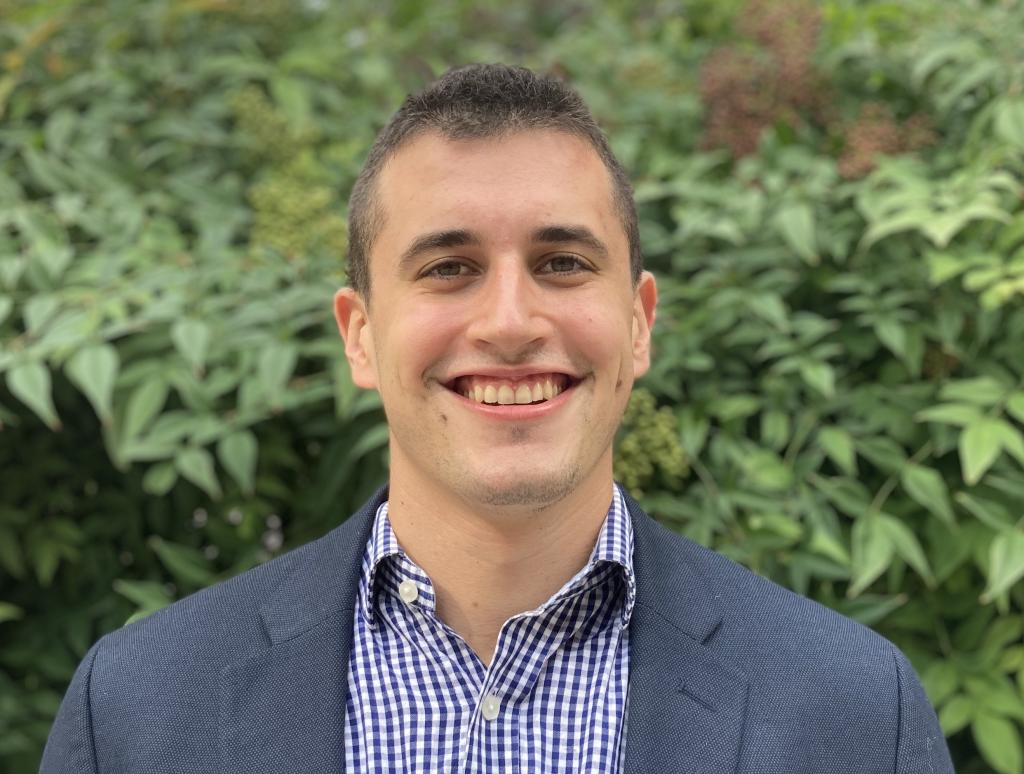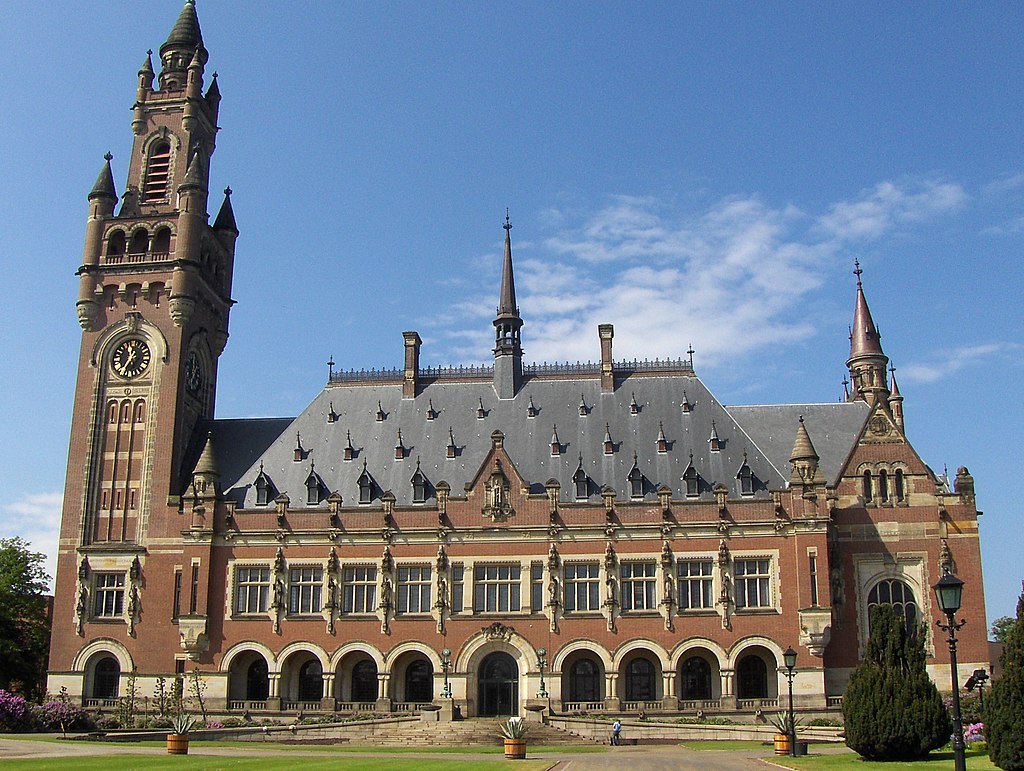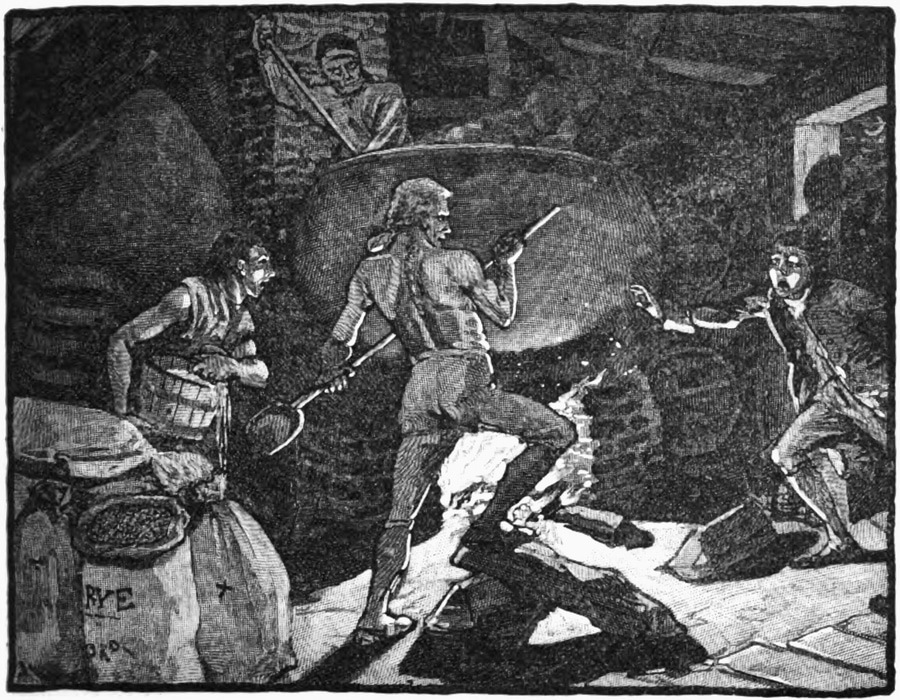Pattern-or-Practice Investigations and Police Reform
Attorney General Merrick Garland has announced pattern-or-practice investigations into police in both Minneapolis and Louisville after the deaths of George Floyd and Breonna Taylor. What are these investigations, and what can they do?

Published by The Lawfare Institute
in Cooperation With

On April 21, the morning after a Minneapolis jury convicted former officer Derek Chauvin for the murder of George Floyd, Attorney General Merrick Garland announced that the Justice Department had opened a civil investigation “to determine whether the Minneapolis Police Department engages in a pattern or practice of unconstitutional or unlawful policing.” Garland conceded that Chauvin’s conviction “does not address potentially systemic policing issues in Minneapolis.” But he noted that the Justice Department’s probe—a “pattern-or-practice” investigation—will offer a chance to “look beyond individual incidents to assess systemic failures.” Less than a week later, Garland announced that the Justice Department had also opened a pattern-or-practice investigation into Louisville-Jefferson County Metro Government and the Louisville Metro Police Department, whose officers shot and killed Breonna Taylor in March 2020.
Pattern-or-practice investigations give the federal government the chance to get under the hood of state and local police departments, and even to compel offending departments to clean up their acts. But the mechanics that underlie them are complicated. They exist within a constellation of options to remedy harms caused by problem policing and can yield a variety of outcomes. They have been used with varying frequency across administrations. Garland’s announcements offer a good occasion to spell out what exactly a pattern-or-practice investigation is and how different administrations have made use of the tool.
What Are Pattern-or-Practice Investigations, and Why Do They Exist?
The Justice Department describes pattern-or-practice reviews as one of the department’s “central tools for accomplishing police reform, restoring police-community trust, and strengthening officer and public safety.” Congress, as part of the Violent Crime Control and Law Enforcement Act of 1994, gave the Justice Department the authority to conduct pattern-or-practice investigations pursuant to 42 U.S.C.§ 14141, but the authority has since migrated to 34 U.S.C. § 12601.
The provision passed after the Rodney King police beating in 1991, which highlighted what Stephen Rushin characterizes as “the inadequacy … of traditional misconduct regulations” and the need for greater federal involvement in local police reform. Before the legislation passed, the executive branch had limited options to target problem local policing. The department could pursue criminal charges against individual officers or hope that private citizens could achieve redress through civil litigation—but these methods are limited as tools to force department-wide change. The statute that created pattern-or-practice investigations also birthed a cause of action that helps the government fill that void.
Federal criminal investigations have some value as a tool for redress and reform in response to specific incidents of police brutality or other types of wrongdoing. Title 18 U.S.C. § 242 makes it a crime to “willfully subject[] any person … to the deprivation of any rights, privileges, or immunities secured or protected by the Constitution or laws of the United States, or to different punishments, pains, or penalties, on account of such person being an alien, or by reason of his color, or race.” This gives the Justice Department a hook to pursue federal criminal charges against officers in police misconduct cases. But the Justice Department on average prosecutes just 41 cases per year under § 242, and Rushin has documented that the department files § 242 charges against officers only in a small percentage of the cases it considers. By the Justice Department’s own admission, it’s a major uphill battle to secure a criminal conviction in cases involving police misconduct. And as Garland implied in his announcement of the department’s Minneapolis investigation, criminal prosecutions also don’t lend themselves to department-level scrutiny or to structural reform. Prosecutors have a narrow mandate to focus on questions of individual criminal liability, not to undertake structural review of a department’s practices.
On the civil litigation front, 42 U.S.C. § 1983 provides a cause of action for individuals to go to federal court in order to bring monetary damages lawsuits against local officers who deprive them of their constitutional rights. But private damages litigation is hamstrung by a number of factors. The doctrine of qualified immunity offers state and local officers a shield from personal liability for monetary damages as long as they did not violate “clearly established” law. And until the late 1970s, courts generally held that police department superiors were off-limits for damages in instances of misconduct by an inferior officer. A 1978 Supreme Court case, Monell v. New York City Department of Social Services, opened the door for individuals to bring § 1983 lawsuits against local municipalities or departments. But Rushin notes that courts have since held that Monnell liability applies only when a department has been “deliberately indifferent” in its failure to train or supervise an employee.
Plaintiffs who do manage to win large damages suits might hope that the steep payout would prompt police departments to reform their practices. But any number of structural factors—particularly the ways in which jurisdictions fund settlement payouts—dampen the effect of settlement costs on a given jurisdiction, limiting the utility of private civil litigation in spurring meaningful department-level reform.
Litigants in federal court aren’t limited to suing for damages—they can also bring suit to get a court to bind a party to stop or change their behavior. But before the 1994 bill passed, neither private litigants nor the Justice Department had success in getting courts to directly compel entire police departments to change their behavior. As Rushin notes, courts held that without a “clear” statute-made cause of action, plaintiffs didn’t have standing to sue for anything other than monetary damages. In one case, this thwarted a private litigant whom a Los Angeles police officer held in a chokehold from trying to get a court to spell out obligations for the whole department; in another, it blocked the Justice Department from asking a judge to enjoin the Philadelphia Police Department to stop violating the constitutional rights of the city’s residents. In the Philadelphia case, the judge wrote in his dismissal order that “to recognize standing in this case would be to vest an excessive and dangerous degree of power in the hands of the Attorney General.” The appeals court was similarly unmoved by an appeal from the Justice Department.
Pattern-or-practice investigations fill this gap. Under 34 U.S.C. § 12601, the Justice Department can bring civil suits against entire departments in order to compel police departments to fix problems. The threat of litigation is almost always enough to get the offending jurisdiction in question to agree to a binding settlement with the Justice Department, instead of taking its chances in court.
In these investigations, Justice Department staff are tasked with looking for a “pattern or practice” of action by the police department that violates either constitutional protections or federal laws. Section 12601 makes it “unlawful for any government authority … to engage in a pattern or practice of conduct by law enforcement officers … that deprives persons of rights, privileges, or immunities secured or protected by the Constitution or laws of the United States.” The second part of the statute lays the foundation for the Justice Department to do something to fix the problems: “Whenever the Attorney General has reasonable cause to believe that a violation [of the type mentioned above] has occurred, the Attorney General, for or in the name of the United States, may in a civil action obtain appropriate equitable and declaratory relief to eliminate the pattern or practice.” The granting of authority to the Justice Department to litigate for equitable relief—a court order that binds a jurisdiction to certain reforms—makes the statute a game-changer, allowing the department to secure legally binding reform agreements for particular jurisdictions.
Pattern-or-practice investigations don’t preclude private civil litigation or federal criminal charges. Both can happen in addition to a pattern-or-practice investigation. The Minneapolis Star Tribune reported on April 29, for example, that the Justice Department plans to use federal civil rights charges to seek an indictment of Chauvin and three other former officers involved in the killing of George Floyd, in addition to the guilty verdict against Chauvin in Minnesota state court.
How Do Pattern-or-Practice Investigations Unfold?
The Justice Department has to travel a long way to get to a binding set of reforms for a department. First comes the behind-the-scenes process of deciding which police departments merit a pattern-or-practice investigation. The department emphasizes that it “identifies far more jurisdictions that meet the basic criteria for opening an investigation than it is able to investigate.” Jurisdictions can come across the Justice Department’s radar through complaints submitted to the Justice Department, through private litigation—particularly when spearheaded by well-resourced advocacy organizations—and by press reporting on police misdeeds. Lawyers at the department look into these leads by examining information sent to the Justice Department, consulting experts and reviewing public information during the “preliminary inquiry process.”
A small minority of the “preliminary inquiries” make it to the “formal investigation” stage. The Justice Department says it prioritizes potential investigations that could have a broader impact across the country—allegations that “represent an issue common to many law enforcement agencies” or allegations that “represent an emerging or developing issue.” Lawyers in the Special Litigation Section of the Civil Rights Division make recommendations to the assistant attorney general for civil rights. (President Biden has nominated Kristen Clarke for this role, though she has not yet been confirmed.) Should the assistant attorney general sign off on the recommendation, the Civil Rights Division reaches out to inform the local jurisdiction that the Justice Department will soon open an investigation into its practices. Then comes the public announcement of the probe.
The Special Litigation Section runs the investigations but often gets help from the local U.S. attorney’s office. For the investigation into the Minneapolis Police Department, for example, this would mean that Civil Rights Division staff based in Washington, D.C., will run the investigation but may work in tandem with staff in the office of the U.S. attorney for the District of Minnesota. Per the Justice Department, Civil Rights Division staff lean on U.S. attorney’s offices to familiarize the Washington-based investigators with local dynamics and people.
The Justice Department says that “many” pattern-or-practice investigations take more than a year. The formal investigation stage entails talking to members of the community, policing experts, police, and potential witnesses to police misconduct, along with extensive review of available data and department policy documents. During an investigation, the Justice Department details, the department
comprehensively evaluates the law enforcement agency’s written policies and actual practices, including its systems for training, equipping, and supervising officers; how it collects and uses data to identify and address problems; its systems for holding officers accountable for misconduct; and the degree of accountability to community voices and democratic government.
This means the investigators often have to contend with familiar evidentiary obstacles—for example, poor department-level record-keeping and union-negotiated rules requiring periodic destruction of police disciplinary records. Investigators look for patterns or practices of police departments depriving people of their constitutional rights or violating federal law. A recent Congressional Research Service report explains that pattern-or-practice investigations often focus on Fourth Amendment violations for excessive force and illegal searches and seizures, Fifth Amendment violations for coerced confessions or officers attempting to stop bystanders from filming police, or Fourteenth Amendment Equal Protection Clause violations for racial discrimination.
The Civil Rights Division then determines whether there is “reasonable cause to believe that there is a pattern or practice of Conduct that is in violation of the Constitution or federal law.” If the Justice Department decides a jurisdiction’s conduct meets the threshold, it compiles a report of its conclusions and the evidence that supports them. The department’s work product first goes to the jurisdiction under investigation and then to the public.
Justice Department staff will consult with members of the local community and police unions before launching into the process to create rules that will bind the jurisdiction to certain reforms. The Justice Department can pursue one of two paths to establish the binding reforms: It can try to negotiate with the jurisdiction to arrive at a court-approved settlement, or it can use the § 12601 cause of action to litigate against the jurisdiction in order to get a court to compel certain reforms. But the Justice Department has only ever taken six pattern-or-practice cases to trial; negotiated settlements, among other things, save the department the resource strain of protracted litigation. To date, half of these negotiated settlements have been consent decrees, which courts oversee by appointing monitoring teams to ensure compliance and issue updates on a jurisdiction’s progress. The Justice Department considers consent decrees to be the “most effective” in ensuring transparency and accountability for the implementation of institutional reforms. But the department can opt instead to pursue two less coercive options: It can arrive at a “memorandum of agreement,” which it can enforce in court but comes without the court-run monitoring, or it can write a letter to the jurisdiction spelling out a list of voluntary reform suggestions.
Since 2009, Equal Protection Clause violations for discriminatory policing on the basis of race and ethnicity have been the most common issue addressed in the Justice Department’s pattern-or-practice cases. While these investigations are often associated specifically with racial discrimination and police use of force, § 12601 cases have identified a wide range of issues in policing, including systemic discriminatory behaviors on the basis of wealth, disability, sexual orientation, mental health, and gender identity or gender expression. The Civil Rights Division has also uncovered patterns or practices of unlawful use of force, illegal jailing, and underreporting of sex crimes, among other violations of federal law and constitutional rights in local jurisdictions.
In a 2016 report on the federal investigation into the Baltimore City Police, for example, the Civil Rights Division found that in addition to “powerful circumstantial evidence of racial profiling,” “officers routinely use unreasonable force against individuals with mental health disabilities or those experiencing a crisis.” In Puerto Rico, the division found “troubling evidence that [the Puerto Rico Police Department] frequently fails to police sex crimes and incidents of domestic violence.” And in New Orleans, the division condemned the New Orleans Police Department’s excessive use of force, as well as reports of officers wrongly arresting transgender residents for prostitution and charging them under the state’s “crimes against nature” statute.
How Have Different Administrations Approached Pattern-or-Practice Investigations?
The Justice Department has opened a total of 71 formal pattern-or-practice investigations since such investigations began in 1994, with 40 cases ending in negotiated agreements. The department has pursued § 12601 cases with varying degrees of aggressiveness under different presidents. During the Obama administration, the Civil Rights Division initiated 24 pattern-or-practice investigations and entered into 24 consent decrees or settlement agreements. Under President Trump, by contrast, the division opened just one investigation and placed limits on consent decrees and settlement agreements.
The first pattern-or-practice investigation ever initiated was opened in Torrance, California, in May 1995, though the probe did not find evidence of systemic misconduct. The first investigation to find unconstitutional policing came in April 1996 against the city of Pittsburgh. After a nearly year-long investigation into the Pittsburgh police, the Civil Rights Division issued a letter in 1997 that detailed it had found “a pattern or practice of excessive force, false arrests, and improper searches and seizures, grounded in a lack of adequate discipline for misconduct and a failure to supervise officers.” Pittsburgh entered into a consent decree with the division that was in effect from April 1997 to September 2002, with monitoring continuing through 2005. As noted by the Justice Department’s report on pattern-and-practice work, an independent assessment of the Pittsburgh reform agreement described the effort in 2005 as “a success story for local police management and for federal intervention.”
Following the Pittsburgh case, President Clinton’s Justice Department sought millions of dollars in additional funding to expand pattern-or-practice investigations. The Civil Rights Division opened a total of 25 investigations during Clinton’s time in office, according to the National Bureau of Economic Research’s data on pattern-or-practice investigations. And the department entered into three consent decrees and one memorandum of agreement, amounting to four total negotiated settlements—fewer than the Bush and Obama administrations. Rushin has attributed the lack of settlements largely to the time it took for Clinton’s Justice Department to implement enforcement strategies following the passage of the 1994 crime bill.
Under President George W. Bush, the Justice Department’s § 14141 (now § 12601) enforcement slowly waned. The change might have reflected Bush’s political priorities: As Bush made clear prior to his presidency, he was opposed to the federal government “second-guessing local law enforcement decisions” and did “not believe the Justice Department should routinely seek to conduct oversight investigations, issue reports or undertake other activity that is designed to function as a review of police operations in states, cities and towns.” The Bush-era Civil Rights Division initiated 20 pattern-or-practice investigations and entered into 10 negotiated settlements (including two consent decrees, seven memoranda of agreement and one other agreement) during Bush’s full tenure in office. But the majority of this § 14141 action was taken during Bush’s first term: From late 2004 to early 2009—Bush’s second term—the division opened seven pattern-or-practice investigations (as compared to 13 in the first term) and did not enter a single negotiated settlement.
The Obama administration took a sharp departure from the Bush-era slowdown. Rushin quotes an account of a June 2010 address by then-Assistant Attorney General for Civil Rights Thomas Perez in which Perez “told a conference of police chiefs … that the Justice Department would be pursuing ‘pattern or practice’ takeovers of police departments much more aggressively than the Bush Administration, eschewing negotiation in favor of hardball tactics seeking immediate federal control.” Obama’s Justice Department hired additional attorneys to support enforcement of § 14141, and by the end of Obama’s second term, the Civil Rights Division had ultimately entered into 24 negotiated settlements, more than the department had under both of the previous administrations combined. Of these negotiated settlements, 14 were consent decrees, nine were memoranda of agreement, and one was a “memorandum of understanding.”
Trump, however, sought to cut against the Obama administration’s efforts at police reform and maligned reform efforts as part of what he characterized as a “war on cops.”
Trump’s first attorney general, Jeff Sessions, had once called consent decrees “one of the most dangerous, and rarely discussed, exercises of raw power” and “an end run around the democratic process.” When he was confirmed as attorney general, Sessions ordered a review of all existing consent decrees, including an internal statistical analysis that was later abandoned. On Nov. 7, 2018, his last day on the job, Sessions issued a memo directing federal prosecutors to limit the use of monitors in the government’s consent decrees.
Sessions also pushed back against pursuing individual pattern-or-practice cases. In the days before Obama left office, the Civil Rights Division produced a scathing report on its investigation into Chicago’s police department, which found “systemic deficiencies within CPD and the City” and stated that “CPD officers engage in a pattern or practice of using force, including deadly force, that is unreasonable” such as “using unreasonable retaliatory force and unreasonable force against children.” Trump’s Justice Department inherited the case, and Sessions acknowledged that “Chicago had a pattern of abuse that justified a lawsuit to protect our constitutional liberties” but took no action to obtain court-ordered reform. A Reuters Special Report detailed that after months without federal action, Illinois’s attorney general filed a lawsuit against the city’s police in August 2017. Once Illinois and Chicago proposed their own consent decree, the Justice Department issued a statement of interest in opposition to it, urging a judge to block the decree because it would hamper the city’s ability to “to combat a historic violent crime wave.” The judge nonetheless approved the consent decree in January 2019.
Sessions’s Senate-confirmed successor as attorney general, William Barr, took similar actions to limit restrictions on police departments. During protests following George Floyd’s death in summer 2020, the Justice Department invoked a 2012 consent decree to block Seattle’s city council from forbidding Seattle officers’ use of pepper spray, tear gas and projectile launchers on crowds. The consent decree—which was imposed after a pattern-or-practice investigation found that the Seattle department used unnecessary and excessive force—gave the federal government authority to object whenever the Seattle Police Department changed its rules regarding the use of force. Under this authority, the Justice Department challenged Seattle’s implementation of the proposed stricter weapons restrictions for police officers, arguing that the bans would result in “officer confusion” and “inability to de-escalate situations in which force may be needed.” The presiding judge temporarily granted the government’s request on July 24, 2020, enjoining the Seattle city council’s ordinance with a 14-day restraining order.
Trump’s sole pattern-or-practice investigation was opened in 2018 against a small drug unit in a mid-sized police department in Springfield, Massachusetts. Lawyers involved told Reuters they tried to appeal to Sessions by pitching the investigation as looking into “a unit so bad that they can’t effectively fight crime.” The investigation concluded in July 2020, finding “evidence that Narcotics Bureau officers repeatedly punch individuals in the face unnecessarily, in part because they escalate encounters with civilians too quickly, and resort to unreasonable takedown maneuvers that, like head strikes, could reasonably be expected to cause head injuries.” The report concluded that “[t]his pattern or practice of excessive force is directly attributable to systemic deficiencies in policies, accountability systems, and training,” and stated that “[m]oreover, there is reasonable cause to believe that officers use excessive force even more often that our investigation uncovered.” The Springfield report described unquestionable misconduct: In one February 2016 incident recounted in the report, the unit’s officers allegedly beat a juvenile “so severely that he received a fractured nose, two black eyes, and numerous head contusions and abrasions.” In another incident, the report detailed, a 43-year veteran of the Springfield police was indicted in 2016 for allegedly stealing almost $400,000 from the narcotics evidence room.
However, Barr never pursued an enforceable consent decree with the police department in Springfield. In fact, under Sessions and Barr, the Justice Department did not enter into any negotiated settlements. When asked in June 2020 why the Justice Department under Trump had opened only one pattern-or-practice investigation, Barr stated, “[I]f you’re skeptical that progress has been made then you have to wonder what was the results of those 70 consent decrees and pattern and practice investigations. Either progress is being made or it isn’t.” He gestured to “collateral effects that some of these consent decrees have,” stating that a recent Harvard study indicated that the decrees can “actually lead to more death, more murders, more crime.” (He was likely referring to the National Bureau of Economic Research’s 2020 working paper, which found that investigations opened in response to “viral” incidents of police misconduct have led to increases in violent crime. However, the study also found that investigations that were not preceded by such instances have led to reductions in violent crime.)
On his way out, Barr instated a rule change, effective Dec. 28, 2020, that praised Sessions’s 2018 memo and codified an amendment requiring
the relevant Assistant Attorney General of the civil litigating division (or the United States Attorney to whom settlement authority has been redelegated under 28 CFR 0.168) to approve and submit consent decrees involving State or local government entities for approval by the Deputy Attorney General or the Associate Attorney General
if the decree involves court monitoring or creates “long-term structural or programmatic obligations” for a regional jurisdiction. In other words, the new rules held that any binding consent decree must be greenlit by a political appointee from the department.
The Biden administration has so far taken a different approach. On April 16, Attorney General Merrick Garland sent a memo providing internal Justice Department guidance to the heads of civil litigating components and U.S. attorneys regarding settlement agreements and consent decrees. The document rescinds Sessions’s November 2018 memo and orders the department to “return to the traditional process that allows the heads of litigating components to approve most settlement agreements, consent decrees, and the use of monitors.”
Pattern-or-practice investigations do have some drawbacks and dissenters. For one, consent decree monitoring is expensive and can sometimes last more than a decade. Justice Department officials have also conceded to Time magazine that the department sometimes picks settlement terms ill suited to address the bad behavior. Jeffrey Fagan, who oversaw a study into the response of New Jersey State Police to a federal pattern-or-practice investigation, described the limits of pattern-or-practice investigations in slightly different terms: “They did everything that was asked of them except stop profiling.” In other words, negotiated settlements sometimes can’t force a police force to address underlying racial bias. Still, the tool gives the federal government an important inroad into addressing problem policing.
The Minneapolis and Louisville investigations may signal a more aggressive approach by the Biden administration to revitalize the pattern-or-practice investigation. Garland commented at his Senate confirmation hearing that he views pattern-or-practice investigations as at “the core of our ability to bring actions” against those responsible for police misconduct. And Biden’s campaign platform hinted at a desire to broaden the use of the tool, promising that Biden would “push for legislation to clarify that this pattern-or-practice investigation authority can also be used to address systemic misconduct by prosecutors’ offices.” So far, the administration has not yet pushed for this legislative change. But opening two high-profile investigations within Biden’s first 100 days in office seems to indicate a desire within Biden’s Justice Department to make use of the tool in its existing form.






